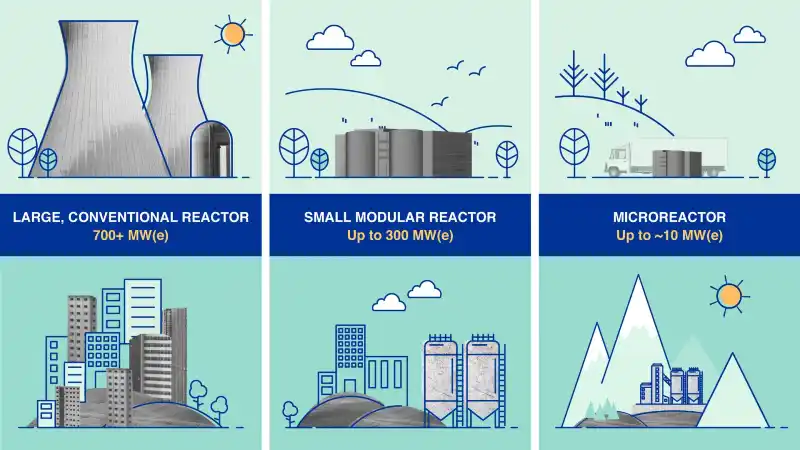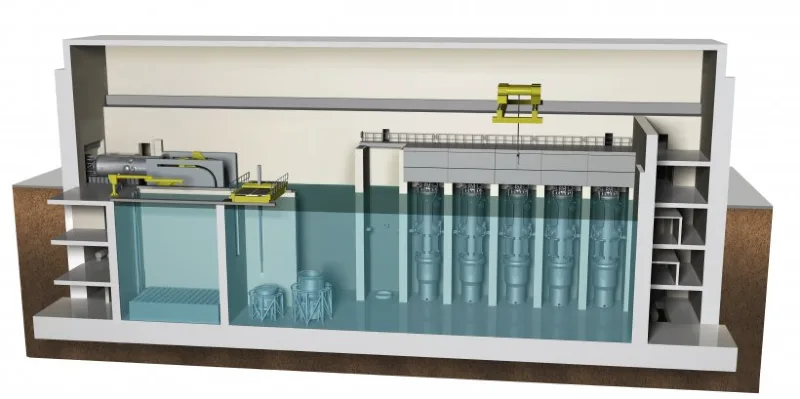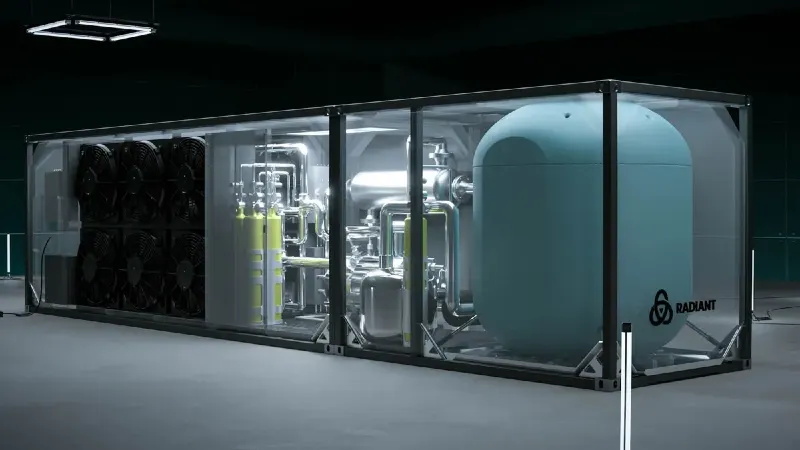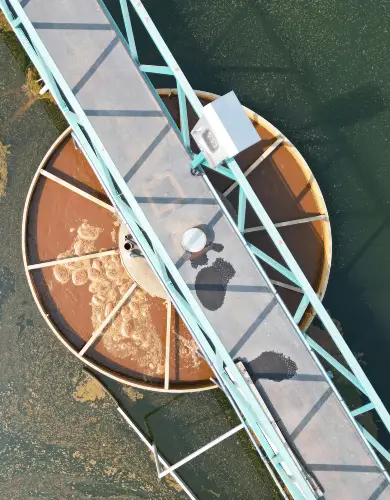Do SMRs and Microreactors embody a nuclear renaissance?
Nuclear power is possibly the most divisive type of energy technology and has historically been at the centre of almost every nation’s energy debate.
Anti-nuclear partisans accuse nuclear power of being dangerous, and it’s waste problematic, while nuclear proponents believe it’s the only realistic solution for decarbonising the global economy.
But times have changed, and the advent of modular energy solutions like photovoltaics and wind turbines has sparked a similar shift in the nuclear industry, which is seemingly moving towards more adaptable yet potentially scalable solutions in the form of Small Modular Reactors (SMRs) and Microreactors.
In this article, we explain what these are and discuss whether this part of the latest nuclear tech stack is really the renaissance of nuclear energy.
Modular nuclear is not new
Before anything, it is necessary to make clear that small, portable nuclear reactors are really nothing new. They were first used to power US nuclear submarines, with the USS Nautilus being the first to be launched in 1955 using a light-water reactor with an energy output of 10 MW.
This would be enough to power about 1,000 typical American households if this were a stand-alone reactor connected to the grid.
It’s only 50 years later, after a couple of nuclear meltdowns and the recognition of climate change that these smaller reactors are being seriously considered for the purpose of consumer energy production, and not only to power spaceships or submarines.
These modular solutions could potentially enlarge the addressable nuclear market by being able to provide smaller-scale and even portable solutions for a plethora of existing applications without a low-carbon alternative while providing safety assurances that larger nuclear (very arguably) can’t.
A brief history of large-scale nuclear power
The post-war 1940s-50s era was the nascent point of nuclear energy but also the start of the cold war between the US & allies and the Soviet nations.
Both sides were constantly flexing to maintain media superiority, and nuclear power soon became the subject of a PR competition, as both sides were “splitting atoms for peace”, as president Eisenhower once put it in a speech to the UN.
Driven by this narrative, global nuclear capacity increased exponentially until the 1980s, almost exclusively in the form of large nuclear reactors, and gradually slowing down until reaching peak production in 2006.
The gradual decline in nuclear energy adoption can be more or less summarised in the following points:
- Energy from fossil fuels gradually became cheaper than nuclear.
- The upfront capital costs and uncertainty of building large nuclear reactors have become less attractive over time.
- The growth of anti-nuclear sentiment, particularly after the Three Mile Island (1979), Chernobyl (1987) and Fukushima (2011) nuclear accidents.
- Nuclear weapon proliferation concerns.
China is the only country still rapidly expanding its large-scale nuclear facilities, as it’s largely seen as one of the only ways it can meet its climate targets.
Are we seeing a nuclear renaissance?
But even with China’s exponential adoption, global nuclear power growth is still nothing like that of the cold war era, and historically, low-carbon energy adoption has been directly correlated with the rise and fall of nuclear energy.
But this 2022 energy crisis appears to be reviving the nuclear rhetoric as it’s the only proven way of scaling low-carbon, baseload power without reliance on Russian fossil fuels, as France did in the 1980s.
And the pro-nuclear crowd have new technological innovations as an ace under their sleeve to argue against the safety concerns, costs, and centralisation often brought to the table by anti-nuclear partisans: nuclear is changing.
And no, it’s not the typical “fusion energy is near”, but the development of progressive modular designs that offer adaptable nuclear power which can be rapidly deployed, safely handled, and scaled up if required.
What are SMRs and Microreactors?
These are the two generalized types of “modular” nuclear reactors currently being developed simultaneously around the globe. The infographic below gives a general idea of the differences:

SMRs or Small Modular Reactors

These are still building-large but can be almost entirely pre-fabricated and shipped to the installation site where they are assembled, minimising construction work.
A single module of an SMR will not typically exceed 300MW of electricity generation, significantly less than the 1000s of MW typical of a large power station.
However, SMRs are designed to have significantly lower capital and operating costs per kWh, as well as guarantees against large-scale meltdowns due to the smaller amounts of radioactive material needed on its smaller cores, as well as the incorporation of the latest safety features.
Its scalability comes from its standardised manufacturing, which means that once SMR models become battle-tested, they will be able to be produced on assembly lines, transported on-site and installed on arrays that scale to requirement.
The standardised description of SMRs above however does not do justice to the heterogeneity of SMR designs and technologies, with over 45 designs currently at different stages of development according to this aggregated database.
Microreactors

To put it simply, if traditional nuclear power stations are PCs and SMRs are laptops, Microreactors would be the equivalent of smartphones.
These smaller reactors will not typically exceed 20MW of electricity production and are 100 to 1000X smaller than traditional nuclear reactors, but they have the enormous benefit of being extremely versatile.
Microreactors are being designed to be fully portable within a standardised container, which means it can be shifted between sites and readily installed to meet any urgent requirements if necessary.
They can be connected to the national grid, or operate entirely off-grid, which means that they can be used for emergency power generation or installed together with renewables to give smaller projects baseload electricity.
Again, by having a small core and using safer fuel alternatives like TRISO, they can guarantee not to cause another high-profile meltdown at the scale of Chernobyl.
So is modular nuclear coming soon?
Yes and no, there are significant developments but there is currently little to show for it.
SMR development
The table below summarises the number of SMR projects and their stages of development.
| Status | Country | Number |
|---|---|---|
| Operating | Russia, China | 2 |
| Under Construction | Russia, China, Argentina | 5 |
| Licensing Stage | US, UK, Canada, Russia, South Korea | 6 |
| Concept/Design Stage | Multiple | 32 |
| Cancelled | US, South Africa | 3 |
| TOTAL | 47 |
Source: Wikipedia
Evidently, most projects are still on the drawing board, but with mounting pressure from the current energy and climate crisis, these may be streamlined to improve the low-carbon energy stack currently available to most countries and companies.
The Akademik Lomonosov in Russia is the only fully-operational SMR in the world and does so from a floating barge, providing heating and electricity to the northern town of Pevek since May 2020. It uses low-enriched Uranium and has a total energy capacity of 300MW.
Otherwise, the HTR-PM in China has had a single operational reactor connected to the grid since December 2021, with the other reactor remaining under construction.
In any case, as with any technology, the effective deployment and scaling of SMRs will largely depend on the continued support from sponsoring governments and venture capitalists.
Some SMRs are exploring alternative fuel types such as Thorium, a variety of electricity and heat-producing designs, as well as a variety of cooling systems using water, molten salt (MSRs) and metals.
Microreactor development
Microreactor development is principally gauged towards powering moving objects or supporting life in outer space, but some of this technology appears to be spilling into traditional power generation on earth.
A startup called Radiant appears to be the trailblazer in the latter. Founded by ex-Space-X engineer Doug Bernauer, Radiant is developing Kaleidos, a fully-portable microreactor housed in a container which can be transported via HGV or regular cargo aircraft.
By “replacing diesel generators in remote villages and providing resilient backup power for hospitals, data centres, and military installations”, Radiant is looking to explore an untapped niche.
And in doing so, they have designed a reactor that can be deployed within a day without the need for any excavation or construction work, and that can be managed remotely without the need for on-site experts.
The microreactor would be able to produce 1.2MW of baseload electricity regardless of conditions and an additional 1.9MW of thermal energy for “facility heating or water desalination”, making it adequate for emergency scenarios.
Their tech stack includes a novel Helium-cooling system as well as the ability to operate without refuelling for 5 years. Delivery of the project is expected as early as 2026.
So are SMRs and Microreactors the large-scale nuclear killers?
The short answer is: NO.
Despite all the advantages SMRs and Microreactors bring, there are also crucial drawbacks to attempting to replace large nuclear power stations with modular, assembly-line models.
Stanford-led research has concluded that due to the smaller scale of reactors, more radioactive waste will be created and less energy per kg of radioactive fuel produced in SMRs compared to conventional nuclear reactors, which can profit from a nuclear economy of scale.
In terms of producing the much-needed colossal amounts of baseload low-carbon energy, only large hydroelectric projects can consistently match nuclear power.
And scaling clean energy production is likely the highest overall global priority when considering the worsening climate crisis. Only the recent Chinese nuclear charge and the French nuclear miracle of the 1980s have been able to achieve this against anti-nuclear rhetoric.
For those nations that need to produce more baseload low-carbon energy, building large nuclear power stations is the only viable solution without banking on future technologies that are still an unfulfilled promise, with examples including:
Nevertheless, the global anti-nuclear rhetoric is strong despite evidence showing that nuclear is statistically one of the safest technologies, which is where SMRs and Microreactors may help, by introducing a more appealing ‘bite-sized’ version of nuclear.
And while providing nuclear energy with novel niche markets where there are currently no low-carbon energy alternatives, such as those covered by emergency diesel generators.
And what about those remote mines operating power-hungry mineral ore crushers far away from the grid? Only SMRs and microreactors could provide baseload energy that only needs re-fuelling every decade (i.e. without batteries, solar or wind can only complement).
Conclusion
SMRs and Microreactors are exciting because it means low carbon nuclear could tap into new market niches while mitigating some of the anti-nuclear stigmas that large nuclear plants have acquired over their history.
Also, these modular solutions will not require as big a time or financial commitment from companies or countries as their assembly-line; cookie-cutter setup means they can deploy much more economically and in significantly less time (at the expense of potentially less energy per kg of fuel and scalability).
But all of this doesn’t spell the end of large-scale nuclear energy, as this is still the proven, scalable solution that is ultimately necessary when taking into account that the world is still significantly behind its decarbonisation goals.
The net-zero by 2050 goal to avoid catastrophic climate change needs ALL low-carbon solutions to be implemented and scale together and fill in all of the niches that need filling, with this type of diversification coming with the added bonus of providing energy independence and security.

